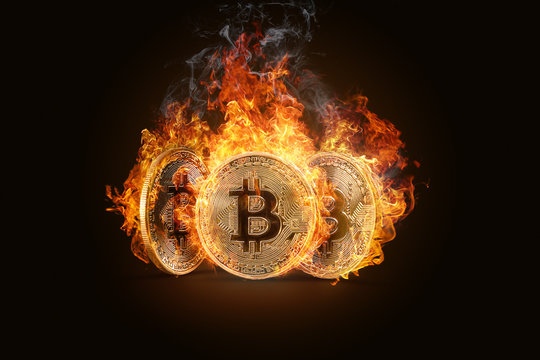Coin burning: What is It and How Does It Affect Prices?
Coin burning is the act of destroying a certain amount of cryptocurrency so that there is less of it and more people want to buy it. Most of the time, this procedure makes the asset more expensive. What Does Coin Burning Mean? This is the permanent removal of a certain number...

Coin burning is the act of destroying a certain amount of cryptocurrency so that there is less of it and more people want to buy it. Most of the time, this procedure makes the asset more expensive.
What Does Coin Burning Mean?
This is the permanent removal of a certain number of coins from circulation, either by the owner’s choice or based on a set of rules. You can get rid of assets by using special addresses and smart contracts. This process can also be done automatically when a transaction is made.
Retirement can be done by people, companies, marketplaces, and decentralized applications, among other things. Many cryptocurrencies have burning built into their code.
When taking money out of circulation, different kinds of assets are used. A custodial or decentralized exchange can make money from the funds it holds. Fees for transactions can be burned, which is how some cryptocurrencies work. There is also Proof-of-Burn (PoB), which means that some of the validators’ assets are taken out of circulation.
This method is used to make deflationary currencies, for example. Profits can be given to the people who own the asset by burning it. It is also a tool that can do things like reduce network load, stop spam, and use a special consensus mechanism
How Coin Burning Works?
If you send coins to an address that doesn’t have a private key, those coins will be destroyed. It is possible to send money to an address that is wrong or that was made up just for that purpose. It is not hard to make these addresses.
There are many places online where you can find addresses for burning coins. Both of these things can be found in the Bitcoin network, Ethereum, and other blockchains.
In modern networks, a smart contract is used to get rid of money. Ethereum has a “burn” feature that lets you pull ETH and tokens of different standards out of circulation.
When burning, it’s important to show how many coins are being taken out of circulation. If the user has enough money on their balance, the smart contract will block the number of tokens they want to destroy.
Some Features You Should Know
In some projects or cryptocurrencies, the process of burning coins is built into the algorithm. Taking something out of circulation is another step in the transfer of assets. Most of the time, the fee is burned (partially or in full).
Using special software, miners can also take coins out of circulation. This chance is taken advantage of by not getting transaction fees when a block is confirmed. If the blockchain doesn’t have information about how money is sent to the miner, these assets won’t go to anyone.
One of the first projects to use the Proof-of-Burn consensus method was Slimcoin. Miners must send coins to addresses where they will be burned. The result of the transaction is a unique hash that lets you put PoB blocks together
Proof-of-Work (PoW) blocks are placed between these blocks. Burnt coins “decompose” over time (Decay). Technically, this is done with a multiplier that depends on how many coins were taken out of circulation and how much time has passed since then. For example, a 60-coin multiplier for a burn transaction will triple in 1000 days. When 20 tokens are destroyed after the given amount of time, the same thing happens. So, since the first transaction, 40 coins have “gone bad.”
The amount of computing power used to buy funds is proportional to how likely it is to make a PoW block. Like the Proof-of-Work algorithm, the chances of finding a Proof-of-Block depend on how many coins have been spent (burned). The algorithm lets you get more benefits without having to buy more computer equipment. In exchange, it is possible to burn coins to get a high income in the future without having to invest money.
What Happens to the Value of an Asset When it is Burned?
Depending on the stated goals and the algorithm for burning coins, the operation can have different short-term and long-term effects on the price of the asset. The biggest impact is made by exchanges and other projects that use some of the income to buy an asset on the market and then destroy it. Changes in the balance between supply and demand have a lot to do with how much something costs. So, buying coins often is a good way to help their value go up.
When a large amount of money is spent or bought, the asset rate can go up quickly. In the long run, these things give you the chance to raise prices even more. These things will have the same effect on the market as foreign exchange intervention.
Some projects keep a large amount of money in their own tokens. They can use some of the money they make by burning coins. At the same time, the number of tokens in circulation goes down, but this is not a requirement to buy tokens. These things make good news, but compared to buying back coins, they have much less of an effect. But a drop in the number of items available can cause the price to go up.
